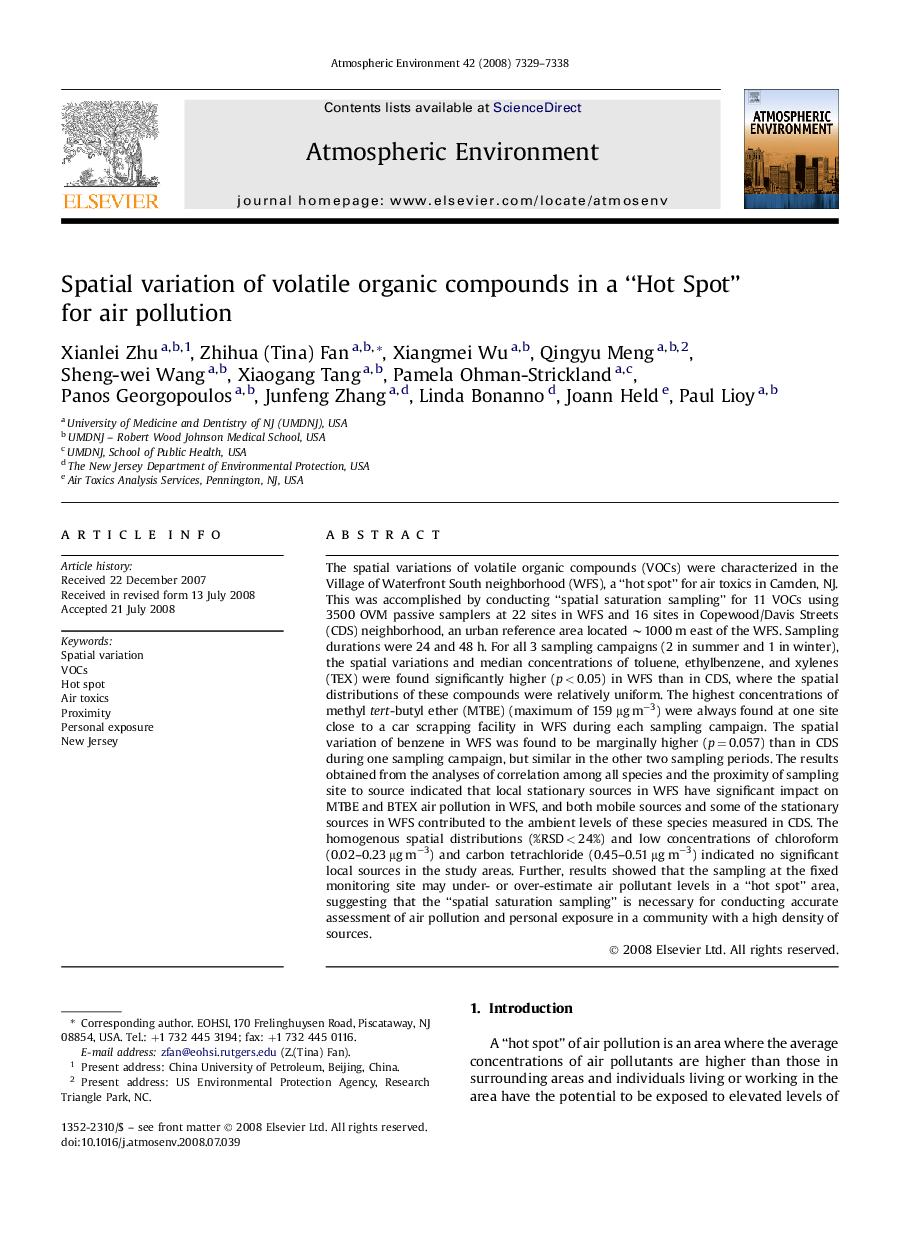| کد مقاله | کد نشریه | سال انتشار | مقاله انگلیسی | نسخه تمام متن |
|---|---|---|---|---|
| 4442179 | 1311141 | 2008 | 10 صفحه PDF | دانلود رایگان |
عنوان انگلیسی مقاله ISI
Spatial variation of volatile organic compounds in a “Hot Spot” for air pollution
دانلود مقاله + سفارش ترجمه
دانلود مقاله ISI انگلیسی
رایگان برای ایرانیان
کلمات کلیدی
موضوعات مرتبط
مهندسی و علوم پایه
علوم زمین و سیارات
علم هواشناسی
پیش نمایش صفحه اول مقاله

چکیده انگلیسی
The spatial variations of volatile organic compounds (VOCs) were characterized in the Village of Waterfront South neighborhood (WFS), a “hot spot” for air toxics in Camden, NJ. This was accomplished by conducting “spatial saturation sampling” for 11 VOCs using 3500 OVM passive samplers at 22 sites in WFS and 16 sites in Copewood/Davis Streets (CDS) neighborhood, an urban reference area located â¼1000 m east of the WFS. Sampling durations were 24 and 48 h. For all 3 sampling campaigns (2 in summer and 1 in winter), the spatial variations and median concentrations of toluene, ethylbenzene, and xylenes (TEX) were found significantly higher (p < 0.05) in WFS than in CDS, where the spatial distributions of these compounds were relatively uniform. The highest concentrations of methyl tert-butyl ether (MTBE) (maximum of 159 μg mâ3) were always found at one site close to a car scrapping facility in WFS during each sampling campaign. The spatial variation of benzene in WFS was found to be marginally higher (p = 0.057) than in CDS during one sampling campaign, but similar in the other two sampling periods. The results obtained from the analyses of correlation among all species and the proximity of sampling site to source indicated that local stationary sources in WFS have significant impact on MTBE and BTEX air pollution in WFS, and both mobile sources and some of the stationary sources in WFS contributed to the ambient levels of these species measured in CDS. The homogenous spatial distributions (%RSD < 24%) and low concentrations of chloroform (0.02-0.23 μg mâ3) and carbon tetrachloride (0.45-0.51 μg mâ3) indicated no significant local sources in the study areas. Further, results showed that the sampling at the fixed monitoring site may under- or over-estimate air pollutant levels in a “hot spot” area, suggesting that the “spatial saturation sampling” is necessary for conducting accurate assessment of air pollution and personal exposure in a community with a high density of sources.
ناشر
Database: Elsevier - ScienceDirect (ساینس دایرکت)
Journal: Atmospheric Environment - Volume 42, Issue 32, October 2008, Pages 7329-7338
Journal: Atmospheric Environment - Volume 42, Issue 32, October 2008, Pages 7329-7338
نویسندگان
Xianlei Zhu, Zhihua (Tina) Fan, Xiangmei Wu, Qingyu Meng, Sheng-wei Wang, Xiaogang Tang, Pamela Ohman-Strickland, Panos Georgopoulos, Junfeng Zhang, Linda Bonanno, Joann Held, Paul Lioy,